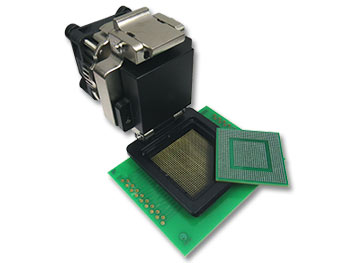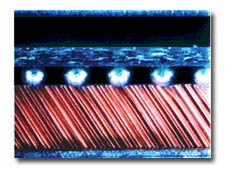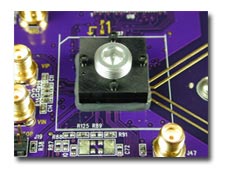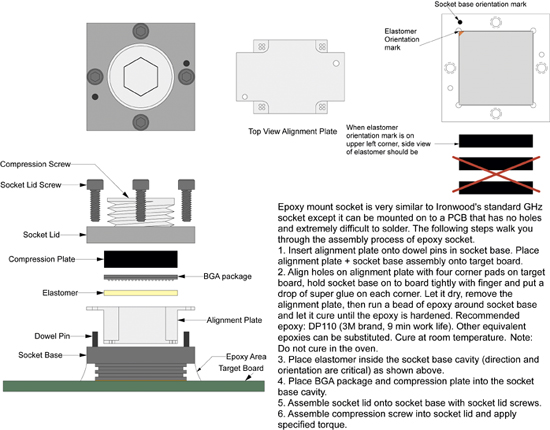GHz BGA & QFN/MLF Sockets


Ironwood’s GHz BGA & QFN/MLF sockets are ideal for prototyping and testing almost any BGA or QFN device application. These ZIF sockets provide excellent signal integrity yet remain cost effective. Innovative elastomer interconnect technology that delivers low signal loss up to >40GHz and supports BGA or QFN/MLF pitches down to 0.3mm was utilized in these sockets. GHz BGA sockets are mechanically mounted over a target system’s BGA lands using mounting and alignment holes at proper locations (page 2 of the individual socket drawing shows recommended PCB layout information). These low-profile sockets are only 2.5 mm per side larger than actual IC packages (industry’s smallest footprint). They support IC devices with body sizes ranging from 55mm down to 1mm. Larger body sizes may require a backing plate. If the backside of the target PCB contains capacitors and resistors, a custom insulation plate with cavities cut for those components can be designed. This insulation plate sandwiches between the backing plate and target PCB.

The sockets have a precision design, which guides the IC to the exact position for connection of each ball and uses an aluminum heat sink screw to provide compressive force. The sockets are designed to dissipate up to several watts without extra heat sinking and can handle up to 100 watts with a custom heat sink. The user simply places the IC into the socket, places the compression plate, swivels the lid, and applies torque to heat sink screw to connect the IC. It is compatible with the alternate SBT-BGA (spring pin) socket footprint and other socket technologies as well. If there are pre-existing holes in the PCB, a GHz elastomer socket can be custom designed to accommodate those holes (please call Ironwood Tech Support @1-800-404-0204). Typical GHz elastomer socket with swivel lid is shown in the figure.
The Z-axis conductive elastomer used in the socket, as a contactor between the IC package and the circuit board, is a low resistance (<0.05ohms) connector. The elastomer consists of a fine pitch matrix of gold plated wires in a soft insulating sheet of silicone rubber. The gold-plated brass filaments protrude several microns from the top and bottom surfaces of the silicone sheet. The self inductance is 0.06 nH. Current capacity is 2A per contact. The operating temperature range for the elastomer is -35C to 125C.

Multiple gold plated wires embedded within the elastomer contact each solder ball of the IC device on the top side and PCB pads on the bottom side to complete the electrical path. Each wire can easily carry typical IC power loads and results in a clean signal path.

If through-holes are unacceptable, or if <2.5mm keep out zone is required, an epoxy mounting option may be considered. While this creates a more or less permanent bonding of the socket to the PC Board, the socket is designed such that the contacting elements are replaceable should damage or excessive wear occur. These patented ZIF sockets are simply mounted to the target PCB by an epoxy band around the perimeter. The socket is placed into position with a precision alignment tool and applying a ring of epoxy around the socket strongly holds it in place. There are special grooves on the socket wall for additional retention strength. The contactor can be easily replaced after hundreds of cycles.
If there is no room to put mounting holes for socket on a customer’s board, the socket can be used with alternate SMT options or with Thru hole options.
The part selection table above shows our standard GHz BGA & QFN/MLF sockets. Custom sockets to accommodate rectangular body shapes, odd sizes, and devices with pitches down to 0.3mm can be developed in short lead time. BGA package specifications can vary widely between manufacturers. We have found that it is most effective for us to ask customers for information about the specific device to be socketed and then provide a quote. You can fill the form with required information or call us at 1-800-404-0204.
